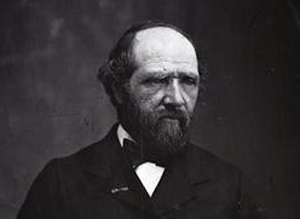
The light sensitivity of bichromates :
In 1797, the chemist Vauquelin, who had just discovered chromium in studying various combinations, found that some of the oxygenated compounds in the presence of organic matter, yielded promptly to them, under the influence of light above, a portion of the oxygen combined behaving vis-à-vis these organic materials in an oxidising agent. This action of acid salts of chromium occurs especially on gelatin, gums, albumin and different colloids or albuminoids. If any of these substances, dissolved in water, was added a solution of bichromate and extended thin layer on the surface of a body that is then exposed to light, it does not take long to change the nature and to undergo molecular changes that result in a more or less complete insolubility in water. This property is the basis of methods known as dichromate, which Alphonse Poitevin was the creator and he applied in 1855. These processes are of various kinds. Some relate to the reproduction of the image by lithographic means, using as printing plate, organic matter itself on which this image has been chemically developed, others set this image on media lithographic ordinary, either directly or through the report. The first received the name of collotype, others are more specifically photolithographie.
Poitevin, as soon as he recognized the opportunity to join the greasy ink only to the parties affected and changed by the light of a surface covered with a layer of dichromated gelatin, believed to come to the realization of photolithography, so he did more than a goal, to further its discovery, how to draw almost immediately and industrial applications…
…It was a question, after all, of a kind of printing similar to that of the ordinary lithography, because, as in this one, we operated on a coat the dry parts of which retained the fat, whereas it was pushed away in the wet places. The material of the board was not the same, the stone was replaced by some bichromatée gelatin, but the produced effect was absolutely similar. Whereas, in the case of the lithography, the drawing was the result of a manual work, here, it was the light which had trained it…
The way was so drawn for multiple improvements which brought to the development of a new technique of printing from photographic negatives : the collotype.
With the collotype, it is about a surface, generally a glass plate, covered with a coat of gelatin bichromatée. The action of the bichromate on the gelatin consists in returning the latter more or less insoluble according to the exposure time to the light. The process thus consists in putting a photographic negative picture on a gelatin surface containing of the bichromate, and to bring a sunstroke with an ultraviolet light. The transparent parts of the negative will be crossed by the light, which acts on the sensitive coat, whereas the opaque parts of the negative are protected.
The plate being then cleared of the bichromate by a wash in the water, then dried, we obtain a surface which, sensibly wet again time, will allow under the passage of a roller in charge of fat ink, an ink deposit on the only parts of the gelatin which saw the light. Other parts remained covered will have absorbed enough water to refuse the ink. Between these two extremes takes place all the range of the halftones gradually impressed, which will retain the in proportion exact ink of the quantity of received light.
Today practically given up because of the care necessary for its implementation, the collotype still lives in some excess rare workshops, in France and throughout the world. Nevertheless, nothing would justify its complete relinquishment. It is about an authentic and sensual technique of creation of artistic images, which also knew how to adapt itself to techniques modern as some tries of use of random weft for computer generated images showed it.
The images obtained by the process of the phototypie are of a delicacy and a wealth of spectacular tones. The range halftones, whether it is in the clear parts or the dark parts are of a photographic quality.
It is important that new persons are interested in this technique, and that tomorrow even, can arise from some workshops of artistic printing office of the works printed there phototypie! The phototypie has to remain as a supplement to the pallet of the modern techniques of printing put at the disposal of the artists, because it is possess unique characteristics. The purpose of this site is to give in detail all the information necessary for its practice by taking into account evolutions which it is possible to bring to him by taking advantage for example of possibilities offered by the digital photography or the by replacing bichromates by reactives less or not toxic.